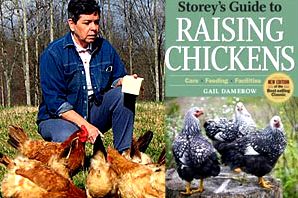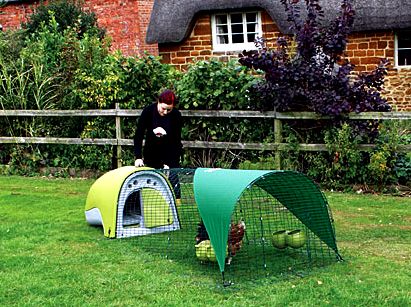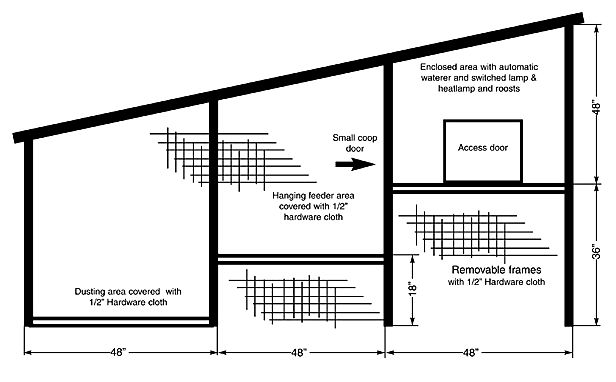 Cluck, cluck, cluck. Bwaak!
Cluck, cluck, cluck. Bwaak!
These aren’t sounds I be prepared to hear on the stroll within my North Oakland, Calif. neighborhood — the typical soundtrack is much more like thumping bass, sirens, and also the rattle of fast-food paper bags. But chickens are pecking in backyards on practically every block, in converted sheds and rickety but raccoon-proof enclosures.
My home, it’s mostly dependent on financial aspects: chicken feed is affordable, and fresh, tasty orange-yolked eggs are costly. Round the country, though, it’s reliable advice that keeping chickens hasn’t enjoyed just as much cachet because it does now. Some metropolitan areas tend to be more chicken-friendly than the others: the Municode Library website usually can let you know whether your city enables chickens, the number of and just what sex just find your hometown and check its code for “chickens.”
I’ve been considering using the chicken plunge myself, however i made the decision to obtain some expert consultancy first.
If these small-brained feathered buddies would be the Boston terriers of the decade, then Gail Damerow is poultry’s Cesar Millan. Within the last 4 decades, she’s elevated a large number of different breeds and written Barnyard inside your Backyard and many other animal-care handbooks. But she’s most widely known for Storey’s Help guide to Raising Chickens, now in the third edition. It’s the primer for those things chicken: from training your wild birds (yes, you are able to, even though they most likely won’t fetch for you personally) to keeping predators away to designing and building your personal backyard coop. (Talking about coops, we’re assembling a slideshow of awesome coops for city chickens for Friday — if you are happy with your poultry’s pad, send us a photograph and caption!)
Gail graciously agreed to reply to my chicken-newbie questions by telephone and email from her farm in Tennessee’s Upper Cumberland.
Q. Can chickens really thrive in a tiny city backyard, or will they need real room to range?
A. Chickens could possibly get along very well in a tiny bit of space, as long as they have sufficient water and food, as well as their atmosphere is stored clean. The primary concern is finding things to allow them to do in order to avoid becoming bored and picking on one another (like brothers and sisters alone within the back seat from the family sedan). The very best chicken toys involve food that can’t be eaten rapidly — like a mind of fresh lettuce or cabbage hung from the string therefore the chickens can peck in internet marketing.
Q. How large will a coop have to be?
A. For that enclosed area of the coop, I’d want a minimum of 3 square ft for lightweight lounging breeds like the Leghorn and 4 square ft for heavier, dual-purpose (meat and egg-lounging) breeds like the Rhode Island Red. For that chicken run, more is definitely better, but total living area (inside and out) of seven.5 square ft per bird ought to be sufficient.
Q. Can there be any benefit to getting four or even more chickens versus two?
A. Chickens are flock creatures that they like company. I believe 3 or 4 would create a much more comfortable social order, unless of course the ability isn’t large enough for that one cheapest within the pecking order to escape others. (As lengthy as you’ve a minimum of two chickens, the first is always cheapest in peck order.)
Q. Can chickens and elevated vegetable beds co-exist happily inside a backyard?
A. Once the garden is within, the chickens will require supervision so that they don’t eat or scratch up emerging seedlings or peck holes in ripening bananas or tomato plants, etc. Furthermore safety’s sake, fresh chicken poop ought to be stored from root crops for 4 months just before harvest, and using their company crops for 3 months, however who raise chickens (who’re around chickens, handle them, clean the coop, etc.) are not as likely to be prone to potential chicken pathogens from garden produce.
 The Eglu Classic chicken house holds two wild birds and charges a watch-popping $650, including delivery inside the U.S.(Omlet US)
The Eglu Classic chicken house holds two wild birds and charges a watch-popping $650, including delivery inside the U.S.(Omlet US)
Q. Are people best creating a simple coop having a run, or buying among the pricy ready-made models such as the Omlet Eglu?
A. That’s a difficult one. A few of the ready-made models are nice, however, many look just a little iffy, specifically for occasions when chickens shouldn’t be outdoors, like during a few days of torrential rain or perhaps in freezing cold temperature.
However, I have seen chicken shelters built by individuals who should not be permitted to utilize a hammer. You need to consider a great deal of products, and not the least being the security from the chickens (no protruding nails, good ventilation although not drafty, insulation, predator proofing, etc.), in addition to how you can efficiently squeeze feed, water, perches, nests, and doorways. Many different types of chicken coops happen to be designed, but none of them is ideal. I’ve resided in the same position for pretty much 3 decades and also have lost tabs on the number of occasions we’ve remodeled our chicken housing we simply finished remodeling our layer house in mid-June. People always ask me for that definitive coop design, but there’s no such factor.
[Readers, should you disagree and think you’ve um, nailed it: send us a photograph of the coop for Friday’s slideshow.]
Q. Your books do, however, provide a sketch for any good workable coop.
 The perfect chicken house provides the wild birds enough space to escape one another, take dust baths, and entertain themselves. (Thanks to Gail Damerow/Floor Books)
The perfect chicken house provides the wild birds enough space to escape one another, take dust baths, and entertain themselves. (Thanks to Gail Damerow/Floor Books)
A. Yes, on-page 78 of the present edition of Help guide to Raising Chickens is my idea of a perfect 4-by-12-feet stationary chicken house for any small backyard situation just like an urban one [above]. It easily fits four chickens of a big breed, 5 to 6 of the light breed, and as much as eight small bantams. It’s completely covered and it has platforms at three levels made to prevent monotony by providing a number of environments. Top of the one-third is entirely enclosed and it is where they sleep and lay the center one-third is open-air and it is where they consume the ultimate one-third reaches walk out to supply a place for scratching and dusting (a lot like a sandbox play area) that the chickens could be discrete to roam.
We love to top of the 4×4 living platform sufficient to become cleaned, and eggs collected, with a person standing. (My hubby is 6′ tall and will get fed up with banging his mind on low overhangs.) Top of the and middle platforms have slat floors, although in really cold temperature top of the platform must have a bit of plywood put into repel evening drafts. When the two upper platforms had solid floors with bedding, the chickens can use the underneath part like a run, however the platforms would need to be cleaned frequently — at least one time per week.
Using the slats, poop falls underneath the upper and middle platforms, into a place paid by hardware cloth (also known as welded wire or rabbit wire everybody calls it different things) to help keep the chicken from scratching within the poop. By from time to time tossing shavings to the poop, odor and flies are stored low and cleaning need not be done before the accumulation becomes offensive. The leading wire panel is removable when ever the buildup must be washed. Don’t get me began about this, but… you can easily modify el born area to support a earthworm bin.
The underside 4×4 section are a run. It may be bedded with wood chips, shredded paper, dried leaves and grass clippings, etc., however i prefer sand the chickens can dust in (they’ll dust within the bedding, but it isn’t nearly as good for eliminating parasites). Chickens need a spot for dusting, so remember that part inside your plan.
Q. Chicken poop makes great fertilizer, I hear, once composted. Just how much waste we’re speaking about each week?
A. That will depend on what’s employed for bedding, just how much, how frequently altered, etc. As well as on the moisture content from the manure. A great guesstimate is roughly one pound of poop each week per chicken. Given that they “go” all night lengthy, a great deal is going to be stacked underneath the perch — within my plan, it builds up underneath the upper platform. The remainder is going to be spread round the run and trampled in to the dirt/sand/grass.
Q. Basically feed my chickens kitchen scraps, about how exactly much grain will i should also feed them per bird for max lounging?
A. No grain whatsoever, please, unless of course it’s sprouted. Grain can make hens fat, and fat hens don’t lay well. About two pounds each week of layer ration, for example Purina Layena, per hen. It’s easy to feed chickens without needing commercial rations, but you should bone on the dietary qualities of accessible feedstuffs and also the dietary requirements of chickens.
Q. The number of eggs will a hen lay over her lifespan?
A. Lightweight lounging breeds start lounging at approximately 18-22 days others at 22-24 days. We’ve been speaking here concerning the “average” chicken, but more specifically we will have to know what sort of chickens: bantams (that are extremely popular) need less space, consume less food, and lay smaller sized eggs lightweight breeds (so known as layer breeds, and that i assume what we’ve been speaking about here), or heavy breeds, which can be more sedate and fewer flighty compared to layer breeds, but require more space, eat more, and lay less but bigger eggs.
Pullets, or youthful chickens, will normally lay with the first winter. Next, hens generally stop lounging as day length decreases within the fall, unless of course supplied with lighting to enhance sun light for as many as 15 hrs each day. So typically — again, with respect to the breed, feed, and management — a hen lays about 240-250 eggs each year very good could be 300 each year. After every year of lounging, the amount of eggs decreases and also the size increases.
A caveat: fat hens don’t lay well, so an overfed hen will produce less eggs and can stop lounging in a more youthful age. Individuals with only a couple of hens have a tendency to spoil them by overfeeding carbohydrates, which chickens love. Table scraps for example lettuce leaves along with other vegetables are great greater than the periodic little bit of stale cake or Question bread, or excessive levels of grain, isn’t good.
Q. City dwellers are utilized to having to pay $4 to even $8 per dozen for eggs from chickens elevated on pasture. Will my backyard eggs be as tasty, and can they finish up being cheaper, even when I go for organic feed?
A. They’ll appear tastier simply because they originate from your personal hens, and they’ll be tastier because they’re fresher (what is fresher than from nest to fry pan?). The financial aspects rely on the cost from the feed, just how much the cost could be reduced by judiciously feeding kitchen or garden scraps, and the number of eggs the hens lay. Using averages, let’s perform the math: A hen eats two pounds of rations each week or about 100 pounds each year, where she lays about 240 or 20 dozen eggs. At $4 per dozen, the break-even point for the price of layer ration could be $80 per 100 pounds. The all-natural layer ration I personally use costs about $25 per 100 pounds. What’s to not like about raising your personal hens?
Resourse: http://grist.org/article/food-chicken-expert-gail-damerow-solutions-newbie-questions/full/
Custom Brooders: Gail Damerow's Hatching & Brooding Your Own Chicks
Comments are closed here.
